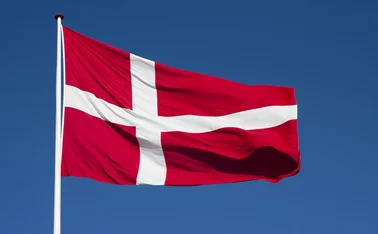
Payments and market infrastructure development: Central Bank of Somalia
Project has returned national payment system to East African country after near-30-year absence

Somalia effectively collapsed as a state in 1991, after the armed groups that overthrew dictator Mohamed Siad Barre fought a civil war. Government became dysfunctional throughout the impoverished East African nation and millions of refugees fled to other countries. The central bank ceased functioning for more than two decades, as did the country’s banking sector. Transactions were carried out in cash, in a mixture of foreign currencies and increasingly threadbare Somali shillings, or by barter.
In the early years of this century, local leaders began the process of re-establishing the Somali state. They received help from many members of the Somali diaspora and the country began to rebuild its financial sector. A few Somali-owned commercial banks began opening in the country. Foreign aid agencies, and institutions such as the World Bank and the International Monetary Fund, offered advice and targeted financing. There was also a vital influx of hard currency from overseas Somalis sending remittances.
In 2012, lawmakers in Somalia’s capital, Mogadishu, formally re-established the country’s central bank. It functioned mainly as a fiscal agent for the government and still does not have the capacity to issue currency or conduct monetary policy.
In April 2019, the country’s president made Abdirahman Mohamed Abdullahi governor. He had spent decades working in the financial sector in Norway and the UK, and one of his key priorities was to develop the financial sector. By 2022, there were 13 banks operating in Somalia, all domestically owned. But these banks lacked what most of their peers would have taken for granted: an interbank payment system. Banks could only carry out transfers between each other by transporting notes in vehicles escorted by security guards. Given Somalia’s security problems, it was costly and “a logistical nightmare”, Abdullahi tells Central Banking.
The new system
Developing a payment system became a strategic objective for the central bank. It worked closely on a project with the World Bank, which gave expert advice and technology financing. Buying and laying fibre-optic cables and other physical infrastructure costs millions of dollars. “Obviously, the Central Bank of Somalia has very limited capacity to make such a huge investment,” says Abdullahi.
The commercial banks themselves bought technology needed to connect to the central bank’s payment platform, he adds. But Somalia’s public security posed problems for technical specialists installing the infrastructure, and a wave of Covid-19 cases in 2021 made it harder to get specialists to the commercial lenders. In the end, the central bank and its partners used a cloud solution to get the first banks connected.
In July 2021, the central bank held a ‘soft launch’ of the system, which revealed no major problems. Nine of Somalia’s 13 banks joined the system for its official launch in August. The country’s other four banks joined over the course of 2022. The central bank itself spent much of 2022 ensuring the payment system functioned properly. So far, there have been no outages.
The central bank used a communications campaign to tell Somali firms that there was a new payment system that allowed fund transfers between different banks. This was an important step towards creating a connected banking sector – rather than a group of unconnected banks. “The landscape of the financial sector has changed,” Abdullahi told Central Banking at the time. “Eventually this will also lead to employment growth and poverty reduction.”
The central bank continued to work at improving the new payment system. It added a ‘switch’ to the system that would allow users of cards issued by one bank to use another lender’s ATMs. The central bank then began to persuade banks to make their cards interoperable. Officials from the Central Bank of Kenya’s payment system team began training their Somali counterparts. The Central Bank of Somalia is also seeking to establish a cheque clearance scheme.
The central bank expected the new payment system to facilitate remittances from citizens overseas. But tighter anti-money laundering and counter the financing of terrorism (AML/CFT) regimes made remittances harder to send . The Central Bank of Somalia now has AML/CFT oversight of the new payment system. This, Abdullahi says, should help to reassure foreign regulators and banks about the appropriateness of payments sent to Somalia.
In late 2022, the international consortium Swift allocated International Bank Account Numbers to Somalia’s central bank and all its commercial lenders. Somali banks will now be able to make or receive cross-border payments – a great advancement for a country with a previously isolated financial sector. The move will reduce operational risks for bank transactions in the national payment system.
The Central Bank of Somalia adopted Swift compliance and financial crime prevention measures. It uses Swift Payment Control Services (PCS) to detect unusual and illicit payment messages before they reach the recipient. The central bank has 16 payment control rules, which include ‘when’, ‘where’ and ‘to whom’ the payment can be sent, as well as thresholds of payments and currencies. The central bank has also adopted transaction screening of incoming and outgoing Swift messages against up-to-date sanctions lists (chosen by the central bank, based on risk). The transaction screening system instantly alerts the Central Bank of Somalia if it detects a message that includes any details or information from any of the central bank’s selected sanctions lists.
The central bank has also been working closely with its Kenyan counterpart, led by governor Patrick Njoroge, to improve its oversight of the new system. It has begun investigating how it can join several regional cross-border payment systems.
Somalia now appears to be reintegrating within the international financial system. Two foreign commercial banks are planning to open branches in Somalia. It is unlikely they would be doing so without the creation of the payment system. Abdullahi says the foreign banks have the potential to significantly increase investment in Somalia. They could also provide letters of credit for trade financing.
Many central banks are working to improve their payment architectures and technologies, but the Central Bank of Somalia has had to re-establish a complete payment system. In doing so, it has created a public good that will be of vital importance to the rebuilding of the nation’s economy.
The Central Banking Awards 2023 were written by Christopher Jeffery, Daniel Hinge, Dan Hardie, Joasia Popowicz, Ben Margulies, Riley Steward, Jimmy Choi and Blake Evans-Pritchard
Only users who have a paid subscription or are part of a corporate subscription are able to print or copy content.
To access these options, along with all other subscription benefits, please contact info@centralbanking.com or view our subscription options here: http://subscriptions.centralbanking.com/subscribe
You are currently unable to print this content. Please contact info@centralbanking.com to find out more.
You are currently unable to copy this content. Please contact info@centralbanking.com to find out more.
Copyright Infopro Digital Limited. All rights reserved.
As outlined in our terms and conditions, https://www.infopro-digital.com/terms-and-conditions/subscriptions/ (point 2.4), printing is limited to a single copy.
If you would like to purchase additional rights please email info@centralbanking.com
Copyright Infopro Digital Limited. All rights reserved.
You may share this content using our article tools. As outlined in our terms and conditions, https://www.infopro-digital.com/terms-and-conditions/subscriptions/ (clause 2.4), an Authorised User may only make one copy of the materials for their own personal use. You must also comply with the restrictions in clause 2.5.
If you would like to purchase additional rights please email info@centralbanking.com







